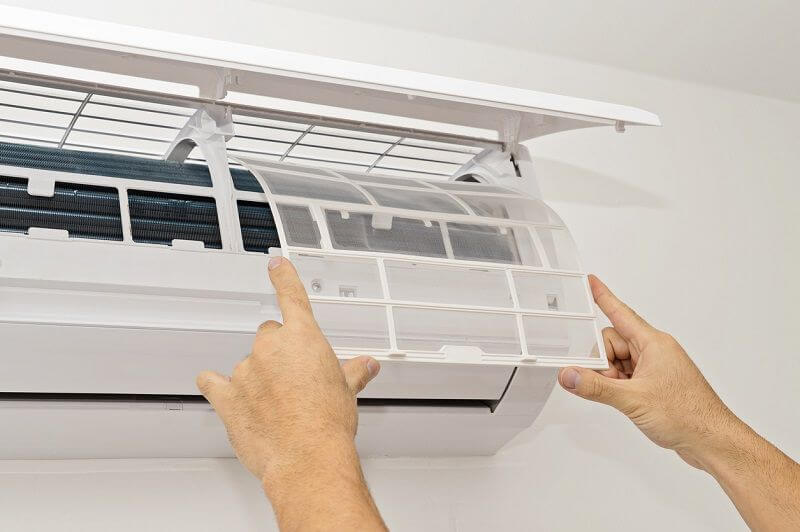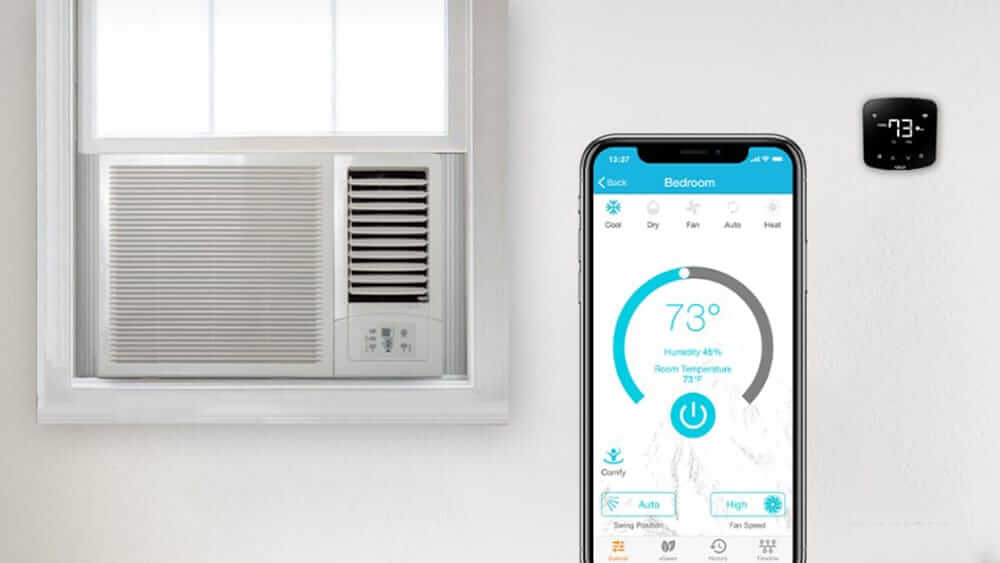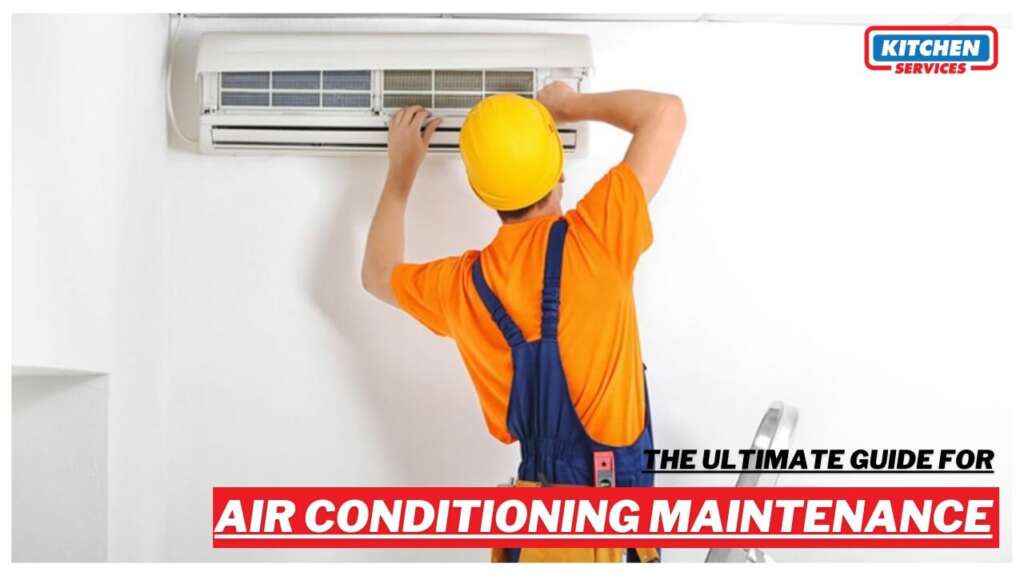If you are one of those people who cannot stand hot weather no matter how hard you try and wherever you live, then you must be aware of the fact that an air conditioner is your best friend for this cause. You always depend on your air conditioning system to keep you and your home cool and comfortable. However, to ensure its optimal performance, regular maintenance is essential. In this article, we present a practical and actionable air conditioner maintenance checklist to help you keep your A/C system in top shape.
Why Air Conditioner Preventive Maintenance is Important?
Same as any other home appliance, it is very normal for your air conditioning unit to go through some regular damages from frequent use and develop many kinds of mechanical problems at some point during its whole lifetime. You need to understand this point that to keep anything moving and running properly requires proper maintenance and attention especially when it is something mechanical.
Some people think that spending money on AC maintenance is a waste of their money and do not care about in-time maintenance of their machinery, but when the time comes and the thing goes out of their hands, they then spend a lot of money on buying a whole new machine so what’s better, a timely repair or spending a lot of money on a completely new thing? If you are looking to keep your home comfortable (and who isn’t?), then keeping your A/C running is a must.
Air Conditioner Maintenance Checklist

Maintain Air Quality with Regular Filter Replacements
Enhance the efficiency of your air conditioning system and potentially save thousands on electricity bills by regularly changing the air filters. It is advisable to inspect your filter on a monthly basis, as they can become clogged within just 30 days, with most reaching this state within 90 days.
To assess your filter’s condition, remove it from the AC unit and hold it up to a light source. If light fails to pass through, indicating a clog, replace the filter promptly. Ensure that the replacement matches the specifications of your old filter, as using a different size or shape may allow unwanted debris to enter the AC unit. If you encounter difficulties with the replacement process, seek assistance from a professional AC service provider.
Ensure Secure Electrical Connections for Optimal AC Performance
Beyond the thermostat, various components of your AC system rely on electrical connections. Following a thermostat check, it’s essential to inspect and tighten all electrical connections. Begin by turning off the electricity supply before proceeding to tighten connections. For safety, wear rubber gloves and utilize appropriate tools to avoid direct contact with wires. If you lack experience in electrical work, it’s advisable to seek the assistance of a professional AC technician to handle this task.
Examine and Address Refrigerant Line Issues
In addition to the thermostat, the refrigerant lines play a crucial role in your AC system’s functionality. If, despite cooling settings, you experience warm air, the refrigerant lines may be clogged or leaking. Direct your attention to the exterior condenser and compressor where the tubes connect between the air handler and the compressor. A thorough inspection of these refrigerant lines can help identify and address any issues affecting the cooling efficiency of your AC unit.
Maintain Optimal Cooling with a Clean Evaporator Coil

The evaporator coil is a crucial component that absorbs heated air, ensuring a comfortable indoor environment. Located either inside the air handler or connected to the furnace, this coil requires periodic inspection.
Illuminate the evaporator with a light source and carefully check for any signs of holes, bends, or cracks. If you detect issues, it’s advisable to seek the expertise of a repair specialist promptly. Problems such as refrigerant leaks can arise, potentially causing damage to your unit. In such cases, turn off the unit and await the arrival of the repair specialist.
While cleaning the evaporator coil is necessary, it’s recommended to entrust this task to a professional. Attempting to clean the coils without expertise may inadvertently lead to damage. Ensure the longevity of your system by relying on the skills of a qualified professional for evaporator maintenance.
Check Thermostat

The thermostat plays a crucial role in regulating your home’s temperature. In the event of AC malfunctions, start by inspecting the thermostat. Verify that the cool/heat/off switch is not in the “off” position. Additionally, review the temperature settings to ensure they align with your preferences. If everything appears in order, examine the power supply, as the thermostat may be disconnected from electricity or require new batteries. Prompt attention to these details can help identify and address thermostat-related AC problems.
While placing your unit on pads is acceptable, it’s crucial to ensure that these pads remain securely in place. Utilizing rocks or concrete can help prevent any unintended movement. If you observe your unit tilting or becoming unstable, it’s advisable to consult with your AC professional to address the issue and implement measures to maintain the unit’s stability.
Inspect Ductwork for Leaks
If you observe irregularities in the circulation of cool or warm air, there might be leaks within your ductwork. Take a thorough walk along the length of your system, paying attention to loose ductwork or gaps between ducts. In the presence of such issues, consider installing new seals and insulation to enhance the efficiency of your system.
Neglecting duct maintenance can lead to the circulation of mold, dust, and potential pest infestations within your AC system. Following a comprehensive duct inspection, use your vacuum cleaner to effectively clean the ducts and ensure the optimal performance of your air conditioning system.
Inspect Coils for Frost or Buildup:
Regularly check the evaporator and condenser coils for any signs of frost, ice buildup, or debris. If frost or buildup is observed, investigate potential causes such as clogged filters, refrigerant issues, or airflow restrictions.
The difference between a split air conditioner maintenance checklist and a window air conditioner maintenance checklist
While there are similarities, there are also some key differences in the maintenance checklists for split air conditioners and window air conditioners. Here are some distinctions:
Split Air Conditioner Maintenance Checklist:
- Indoor Unit Inspection:
- Check the indoor unit components such as the evaporator coil, blower fan, and air filters.
- Clean or replace the filters as needed.
- Outdoor Unit Inspection:
- Inspect the outdoor unit for debris, dirt, and vegetation.
- Clean the condenser coil and ensure proper airflow.
- Refrigerant Levels:
- Check the refrigerant levels and ensure there are no leaks.
- If needed, consult a professional for refrigerant recharge.
- Inspect Ductwork (if applicable):
- Examine the ductwork for any leaks or blockages.
- Check Thermostat and Controls:
- Verify the thermostat settings and the functionality of controls.
- Professional Maintenance:
- Schedule periodic professional maintenance, including a comprehensive system check.
Window Air Conditioner Maintenance Checklist:
- Filter Cleaning:
- Regularly clean or replace the air filters to maintain efficiency.
- Coil Inspection:
- Check and clean the coils, both evaporator and condenser.
- Condensate Drain:
- Inspect and clean the condensate drain to prevent clogs.
- Window Seals:
- Examine and seal any gaps around the window unit.
- Fan Blades:
- Inspect and clean the fan blades for optimal airflow.
- Thermostat Settings:
- Verify and adjust thermostat settings as needed.
While both checklists share common elements, split systems often require more extensive maintenance due to the presence of both indoor and outdoor components. Professional maintenance for split systems is typically more involved, requiring the expertise of a trained technician.
Air Conditioner Maintenance Checklist FAQ’s
Why Does My A/C Need Maintenance?
Anything that is frequently used requires maintenance, so the same way your air conditioner’s filters, coils, and fans need frequent maintenance for its unit to work efficiently and effectively for the whole year of its service. If you intend to neglect the required Air Conditioner maintenance, it will affect the air conditioner’s working and performance in the longer run.
How to Shut Off Your A/C Power?
You will notice most of the air conditioners have a shut-off switch which is installed near the outdoor unit. It is usually made up of a metal box that is already there hanging on your house. You can easily turn off the switch from that metal box and start your repairing work.
How to Clean Your Outdoor A/C Condenser Unit?
To clean your outdoor air conditioner condenser unit, you may use the water hose spray to clean off loose garbage such as grass, leaves, etc., on the outside unit. You can easily spray the outside unit with the coil cleaner that is available in the markets nearby. You will then have to wait for 10 to 15 minutes as the cleaner will turn into foam and it will bond with the dirt on the coils. Rinse the coil cleaner off with the hose.
How to Level Your Outdoor A/C Condenser Unit?
We would suggest you not attempt to level the outdoor unit on your own. Because if you try to move or level the AC unit all by yourself, you may bend the coolant lines which may cause a leak and allowing refrigerant to escape into the atmosphere. Note that even a small crimp in the copper tubing can cause catastrophe in your AC equipment.
How to Clean Your Evaporator Coil?
To clean the evaporator coil, you must follow the following steps.
- Mix warm water and a simple laundry detergent in any spray bottle, hand sprayer, or garden sprayer.
- Apply the water and detergent solution to the evaporator coils.
- Give the solution a few seconds to a few minutes to soak in and loosen debris.
- Apply this mixture again if needed.
What to Do if Your Condensate Drain Line is Clogged?
The clogged drain line occurs as it collects the moisture which is the water that is dripping into the condensate pan. That water then travels down the drain line, or condensate the drain. If this clog occurs, the water will back up and possibly cause harm to your air conditioner.
To get Turn off your air conditioner.
- Remove the cap from the pipe.
- Check if there is any debris stuck in the drain.
- Remove any visible debris and retest for proper drainage.
- Pour in Vinegar.
- Replace the drain cap.
When Should You Call a Pro?
Your Air Conditioner Maintenance is important, no matter which one do you have should be inspected, cleaned, and serviced at least once a year. The best scenario is to have the heating system checked in the Fall and the air conditioning checked in the Spring. This regular maintenance will also reduce your overall air conditioner maintenance cost.
Is the window air conditioner maintenance checklist similar to the central air conditioner maintenance checklist?
Yes, while there are some differences in the specifics, the general principles of maintenance for window air conditioners and central air conditioners are similar. Both involve cleaning or replacing filters, inspecting coils, checking drains, examining seals, and ensuring proper thermostat settings. However, central air conditioners may have additional components, like ductwork, that require attention. Always refer to the specific maintenance guidelines provided by the manufacturer for each type of system.

